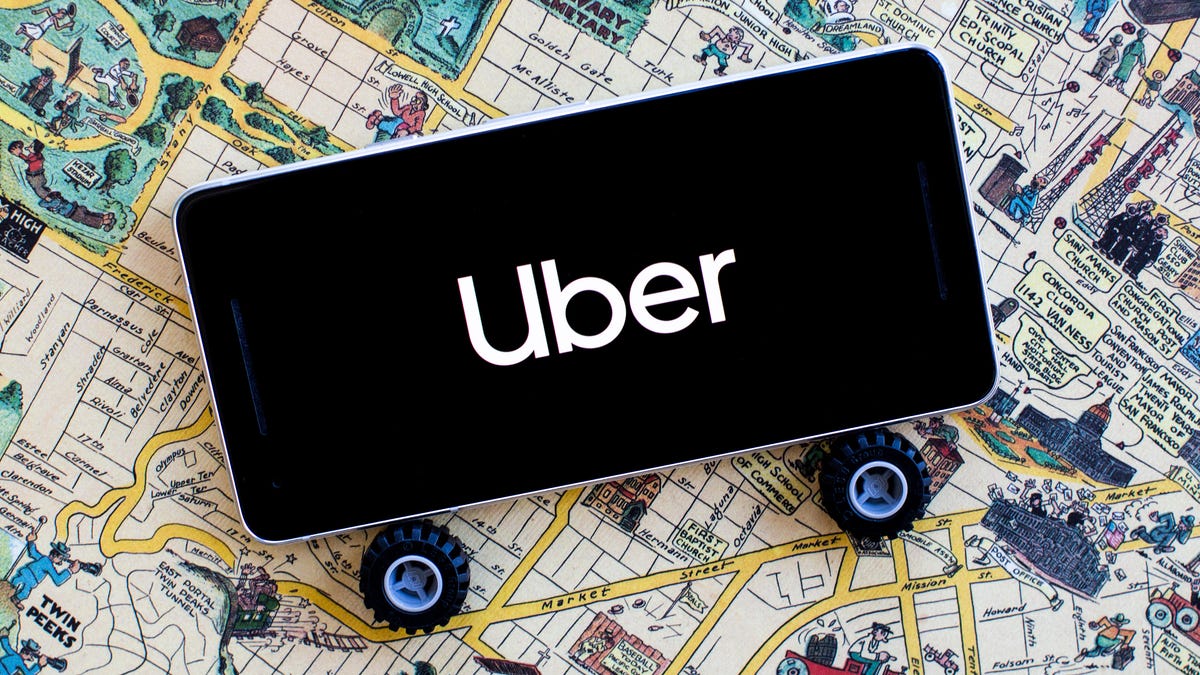Uber says 158,000 drivers will lose work if they're reclassified as employees
Not all economists agree.

Uber said it would limit the number of its drivers in California if it has to classify them as employees.
Uber has been crunching data, and it's come up with an internal analysis on what would happen if it reclassified its California drivers as employees. According to the company, passengers could expect to see prices go up 20% to 120%, and tens of thousands of drivers might be out of work.
Of Uber's 209,000 drivers in the state, the company said, 76% could lose their jobs on the ride-hailing platform. Rural areas would be hit hardest by these cutbacks, Uber said.
"Shifting to an employment model would force us to limit the number of people who could drive on Uber in order to manage costs that are fixed per employee," the company said.
Most economists agree the system would change if drivers were to become employees. But some say numbers like these need more context. For example, rural areas already have minimal coverage by Uber and some drivers only work a few hours a week. If drivers were employees, the platform would run more efficiently, said Michael Reich, co-chair of the Center on Wage and Employment Dynamics at the University of California at Berkeley.
"Some drivers who work more than 40 hours per week will reduce their hours," Reich said. "Many who drive less than 40 hours per week are likely to increase their hours."
Uber's new analysis comes as the debate over gig worker classification in California heats up. Currently, most gig economy companies classify their workers as independent contractors, rather than employees. That means the companies aren't responsible for benefits like health insurance, sick leave and minimum wage. California passed a law last fall mandating that gig workers be classified as employees. The law, AB 5, went into effect on Jan. 1.
Instead of making their workers employees, Uber, Lyft , DoorDash, Instacart and Postmates spent $110 million to sponsor a ballot measure that could exempt them from AB 5. The measure proposes keeping drivers as independent contractors, while adding benefits like an "earnings guarantee." Last Friday, the measure officially qualified for the November election.
The issue is bound to get even more charged as the election nears. Several politicians, like Elizabeth Warren, Bernie Sanders and Kamala Harris, have backed AB 5. On Tuesday, Democratic presidential hopeful Joe Biden weighed in, saying on Twitter that "gig economy giants are trying to gut the law and exempt their workers. It's unacceptable. I urge Californians to vote no on the initiative this November."
Uber's estimates on how much the price of a ride will increase by city if drivers are reclassified as employees.
Uber's internal analysis is based on numbers from before the novel coronavirus pandemic hit at the beginning of March. A company spokesman said newer data would likely show even higher prices and more job losses.
In its analysis, Uber said rural areas would see higher price increases than cities. For example, San Francisco would have a 20% to 30% price increase and the Central Valley would see a 110% to 120% increase. So, in San Francisco, a $10 trip today would be $12 and in the Central Valley could get as high as $22.
Uber said the higher prices would lower rider demand, meaning fewer trips and fewer work opportunities for drivers. Uber's analysis only takes into account having full-time drivers on the platform working 40-hour work weeks.
Uber's conclusion is less drastic than a report published two weeks ago by the Berkeley Research Group, which said 80% to 90% of gig worker jobs would likely be eliminated if independent contractors were reclassified as employees.
Reich, who's authored several reports on gig workers and employment status, is conducting a similar study using California data. He said ride fares would likely increase if drivers become employees, but not by as much as Uber estimates. He believes they'll rise between 5% and 15%, which would mean passenger demand would fall around 3%.
Reich pointed to New York City as an example for what could happen in California if drivers were to become employees. In 2018, New York instituted a minimum wage for drivers and since then drivers have seen higher wages and the city expects the measure will also ease traffic congestion.
"Uber and Lyft currently use their drivers inefficiently, as they carry passengers only about half of driver app time," Reich said. "Under AB5, efficiency would increase, resulting in more pay for drivers, less traffic on the streets and less air pollution. Traffic speeds would increase, making rides for passengers shorter."

